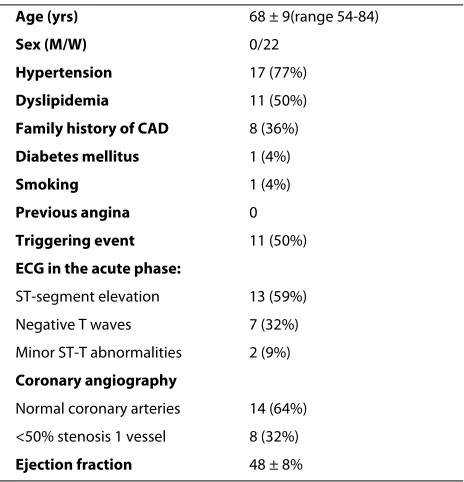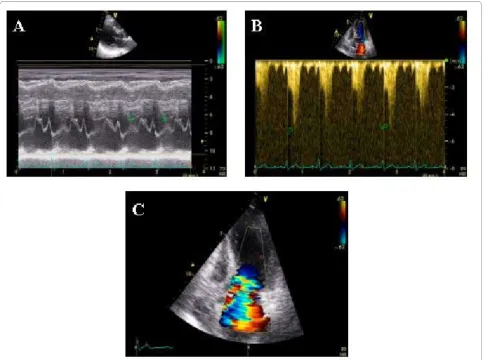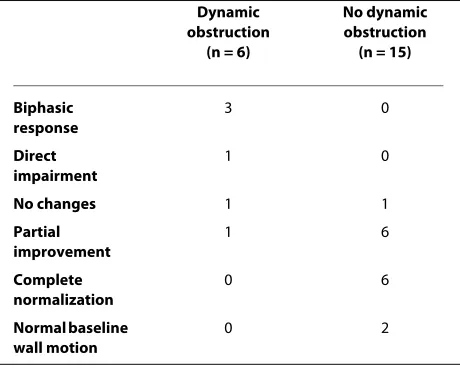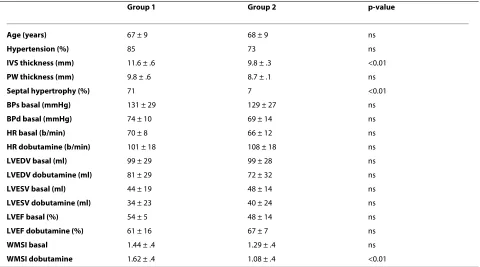Dobutamine stress echocardiography for assessing the role of dynamic intraventricular obstruction in left ventricular ballooning syndrome
Full text
Figure




Related documents
Our data show, that most of the patients presented with the clinical picture of acute inflammatory peri- myocardial syndrome have mixed pericardial and myo- cardial involvement
Background: Takotsubo cardiomyopathy is an acute cardiac syndrome characterized by transient LV regional wall motion abnormalities (with peculiar apical ballooning appearance),
Left ventricular performance in 19 patients with acute myocardial infarction has been evaluated by measuring left ventricular response in terms of cardiac output, stroke volume,
: A CMR study of the effects of tissue edema and necrosis on left ventricular dyssynchrony in acute myocardial infarction: implications for cardiac resynchronization therapy. Journal
Apical ballooning syndrome ( Tako-Tsubo or stress cardiomyopathy): a mimic of acute myocardial infarction. Abraham J, Mudd JO, Kapur NK, Klein K, Champion HC,
Determination of left ventricular systolic function by the apical mono-, bi- and triplane approach using contrast echocardiography in a patient with septal myocardial infarction..
To our knowledge, this represents only the second report of a case of acute myo- cardial ischemia and subsequent infarction resulting transient ventricular dysfunction reported in